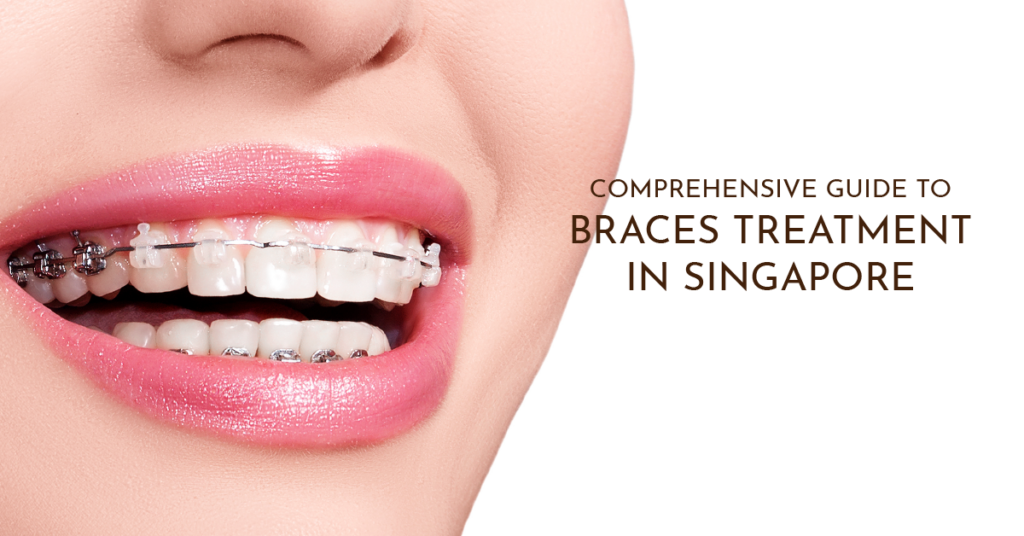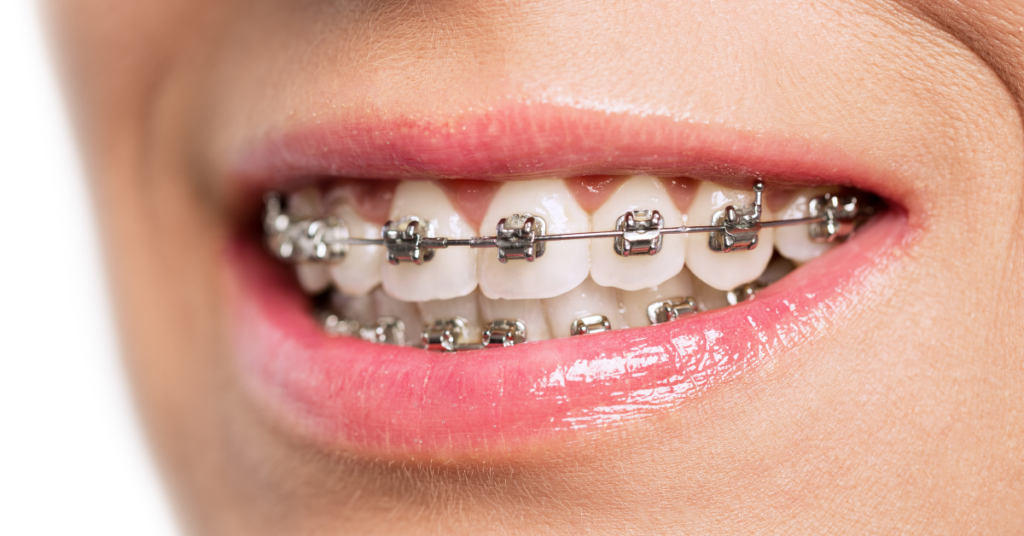Article reviewed by:
Dr Soh Shean Han • Orthodontist

Dental braces is a type of orthodontic treatment that helps to align your teeth. In addition to giving you a beautiful smile, it can have other important functional benefits such as improving your bite and pronunciation, as well as making it easier to maintain your oral health.
Making the decision to embark on an orthodontic journey may not be an easy process. With this comprehensive guide, we seek to answer some of the questions that you may have.
- How do I know if I need braces?
- What are the types of braces available?
- How long does braces treatment take?
- How will braces/aligners affect my daily life?
- What is the financial commitment like?
- Can Medisave be used?
- What age is suitable to start braces treatment?
- What is required after braces treatment?
How do I know if I need braces?
If you find that you are struggling with any of these conditions, orthodontic treatment can be a suitable option.
- Crowded or crooked teeth
- Big gaps between teeth
- Upper and lower teeth that do not fit well
- Overjet (protruding upper front teeth)
- Overbite (excessive overbite between upper & lower front teeth)
- Underbite (upper front teeth that bite behind your lower front teeth)
- Crossbite (upper back teeth sitting inside your lower teeth — rather than on the outside)
- Misaligned jaws
When unsure, you are encouraged to visit an orthodontist for a thorough examination of your dental condition and a treatment plan that best fits your needs.
What are the types of braces available?
There are four types of braces commonly offered:
- Stainless steel [conventional or self-ligating]
- Ceramic [conventional or self-ligating]
- Lingual
- Clear aligners [e.g. Invisalign]
Stainless steel braces
Conventional metal braces are the most common type of orthodontic appliance. Metal brackets are bonded (glued) onto the outer surfaces of your teeth and an archwire is passed through these brackets to exert pressure on the teeth. The pressure from the wires will gradually move your teeth to the desired alignment.

Pros:
- Least expensive
- May be more cost-efficient for selected dental conditions
- Elastic bands that tie the wires to the braces come in a multitude of colours, which can be changed every visit – a possible fashion statement or fun activity for kids and teenagers*
*Self-ligating systems generally do not use elastic bands around the wires. Discuss with your orthodontist if your case is suitable for self-ligating systems e.g. Damon, Smartclip
Cons:
- Metal braces are very visible and not the most aesthetic option
Ceramic braces
Also known as clear braces, these are largely similar to stainless steel braces, with the main difference being tooth-coloured or translucent brackets are used instead of metal brackets.
Pros:
- Less noticeable & more aesthetic than metal braces
Cons:
- More expensive than metal braces
Lingual braces
Lingual braces are similar to conventional metal ones except they are placed on the back of your teeth (beside your tongue), hence making it “invisible” from the front.
Pros:
- Retains some advantages of conventional metal braces
- An aesthetic treatment option
Cons:
- More expensive than conventional metal and ceramic braces
- Can be difficult to clean
- Higher risk of affecting speech during the transition period
- Possibly more uncomfortable hence requiring more time to get used to
Clear aligners e.g. Invisalign
Clear aligners move your teeth using a series of transparent plastic trays. These trays are custom-made for the patient based on the sequence of tooth movement, ideally programmed by the orthodontist.
The aligners are removable and the patient needs to wear the aligners for approximately 20h/day. Patients typically switch to a new set of aligners every 7-14 days (depending on your orthodontist’s advice).
Pros:
- Less visible hence more aesthetic
- Easier to maintain oral hygiene
- Fewer dietary restrictions
- Fewer risks of emergencies such as poky wires, bracket dislodgement
- Longer appointment intervals
Cons:
- More complex cases may require a combination of aligners and braces
- More costly than conventional metal and ceramic braces
- Compliance needed in aligner wear
How long does braces treatment take?
Depending on the extent of teeth and jaw movement required, orthodontic treatment generally requires 18 months to 24 months to complete. It takes approximately 6 months to complete simpler cases while complex cases may require more than 2 years.
Factors that may increase treatment time include:
- Case complexity
- Irregular attendance of orthodontic review appointments
- Poor compliance with elastics or aligner wear
Schedule an examination and consult with your orthodontist to better understand your treatment needs and duration.
How will braces/aligners affect my daily life?
When you start your orthodontic treatment, your teeth may feel uncomfortable because of the pressure exerted by the braces or aligners. Generally, It takes a few days (usually not more than a week) for the discomfort to subside.
As some aspects of your daily routine may be affected, it may be more helpful for you to know beforehand.
Eating
- Keep to a softer diet when you first start your orthodontic treatment or after your orthodontic adjustments as your teeth may feel tender.
- Avoid hard or sticky foods as they could break the wires or dislodge the brackets.
- Avoid sticky sugary foods as they are likely to stay on your teeth and brackets, increasing the risk of tooth decay.
- Remove your aligners before consuming food and drinks except for room temperature or iced plain water.
Oral hygiene routine
- Brush, brush brush! Brush after every meal and snack to prevent food from getting trapped in between the braces. When not possible, at least rinse and continue to brush at least twice a day (once in the morning and once before bed).
- Use the interdental brush to clean under the wires and between the braces.
- Add flossing once a day to your oral hygiene routine.
- Visit your dentist / dental specialist for professional cleaning at least twice a year to remove hardened plaque (calculus) that cannot be removed by brushing.
Tools such as interdental brushes and floss threaders can aid your oral hygiene routine. Speak to your orthodontist on how to use them effectively.
Hobbies and interests
- Contact sports: you are recommended to wear a mouthguard over your braces.
- Wind instrument: with some practice, you should get used to playing a wind instrument with your braces on. If you are wearing clear aligners, you can remove them and put them back after playing.
Speech
- Lingual braces, and occasionally aligners, can cause a lisp during the transition period.
Compliance
- Besides oral hygiene, compliance is needed for 1) regular orthodontic review appointments, 2) consistent elastic wear when indicated by your orthodontist, 3) aligner wear.
- Your orthodontist will determine the frequency of review appointments to best address your treatment needs.
What is the financial commitment like?
Many factors can affect your orthodontic treatment fee, including:
- Appliance type
- Case complexity
The most affordable appliance type is the conventional metal braces. This is followed by ceramic or self-ligating braces, Invisalign, and lastly lingual braces.
Can Medisave be used?
Unfortunately, orthodontic treatment is not applicable to Medisave.
What age is suitable to start braces treatment?
The American Association of Orthodontists recommends that a child sees an orthodontist when a problem is first recognized, but no later than age 7. This allows for early detection of issues with the developing teeth and jaws. Early treatment, when correctly indicated, can reduce the severity of the orthodontic problem and the complexity of subsequent treatment.
If early treatment is not indicated, the child may be advised to undergo regular monitoring or to start treatment during adolescence (around 12 years of age), when all baby teeth are replaced by a new set of adult teeth.
In recent years, it is increasingly common for adults to undergo orthodontic treatment. The good news is you’re never too old to have braces! Adults can achieve a good treatment outcome if they have healthy teeth and gums.
What is required after braces treatment?
After completing your orthodontic treatment, you will need to wear removable and/or fixed retainers. This will reduce the risk of your teeth moving out of alignment and the need for a second round of orthodontic treatment.
Need some dental assistance?
Drop us a text via the WhatsApp icon on the bottom right corner, enquire or call us at (65) 6733 7883.




